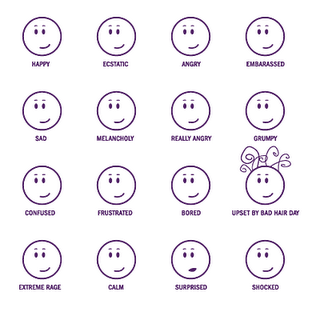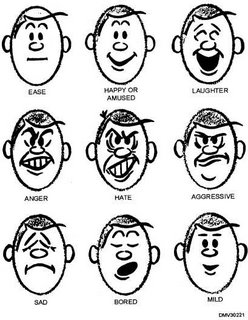Happiness. Sadness. Anger. Disgust. Fear. Surprise. We see those six basic facial emotions so many times during one day that we forget that they are the basics of all of our humanly expressions. Chapter Five in Adler and Rodman's "Understanding Human Communication" discusses nonverbal communication in our daily lives. Another good source to view is the "What Are Emotions" page.
However, those six basic emotions are not the only things that make up nonverbal communication. When two people are standing having a conversation and one of them takes even half a step backwards we often realize that it is suddenly time to go - this is body language, and it is another type of nonverbal communication. The different types of communication, such as posture, eyes, and voice are evident in everyday conversations, however, one does not notice them because we are too focused on the actual content of what the person is saying - not realizing that by watching a persons nonverbal communication we can learn so much more.
Even though nonverbal communication is often
 essential to better interpret what a person is saying, it could often go unrecognized with people whom we have known for a long time. Rather than being able to better understand familiar faces, we begin to predict their very words before they say them - and we often do not even realize that we are robbing ourselves of trying to better understand their nonverbal communicative ways.
essential to better interpret what a person is saying, it could often go unrecognized with people whom we have known for a long time. Rather than being able to better understand familiar faces, we begin to predict their very words before they say them - and we often do not even realize that we are robbing ourselves of trying to better understand their nonverbal communicative ways. The issue of nonverbal communication seems to be of interest to many students, such as EA0653308 who has nicely summed it up.
Pictures
Top left: some of the common facial expressions; bottom right: my botox friends.
Adler, Rodman B. and George Rodman. Understanding Human Communication. New York: Oxfor UP, 2006.


0 Comments:
Post a Comment
<< Home